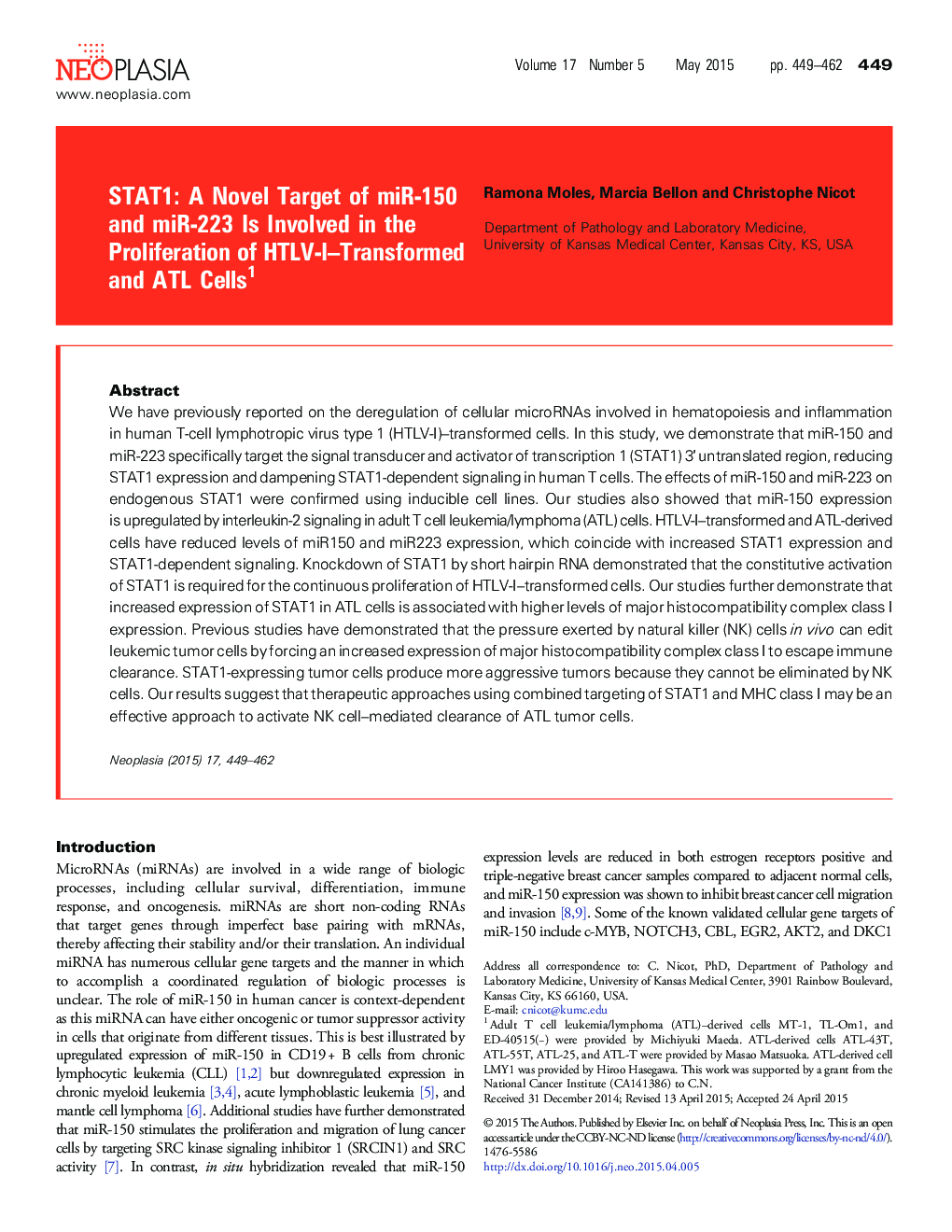| Article ID | Journal | Published Year | Pages | File Type |
|---|---|---|---|---|
| 2151112 | Neoplasia | 2015 | 14 Pages |
We have previously reported on the deregulation of cellular microRNAs involved in hematopoiesis and inflammation in human T-cell lymphotropic virus type 1 (HTLV-I)–transformed cells. In this study, we demonstrate that miR-150 and miR-223 specifically target the signal transducer and activator of transcription 1 (STAT1) 3′ untranslated region, reducing STAT1 expression and dampening STAT1-dependent signaling in human T cells. The effects of miR-150 and miR-223 on endogenous STAT1 were confirmed using inducible cell lines. Our studies also showed that miR-150 expression is upregulated by interleukin-2 signaling in adult T cell leukemia/lymphoma (ATL) cells. HTLV-I–transformed and ATL-derived cells have reduced levels of miR150 and miR223 expression, which coincide with increased STAT1 expression and STAT1-dependent signaling. Knockdown of STAT1 by short hairpin RNA demonstrated that the constitutive activation of STAT1 is required for the continuous proliferation of HTLV-I–transformed cells. Our studies further demonstrate that increased expression of STAT1 in ATL cells is associated with higher levels of major histocompatibility complex class I expression. Previous studies have demonstrated that the pressure exerted by natural killer (NK) cells in vivo can edit leukemic tumor cells by forcing an increased expression of major histocompatibility complex class I to escape immune clearance. STAT1-expressing tumor cells produce more aggressive tumors because they cannot be eliminated by NK cells. Our results suggest that therapeutic approaches using combined targeting of STAT1 and MHC class I may be an effective approach to activate NK cell–mediated clearance of ATL tumor cells.
